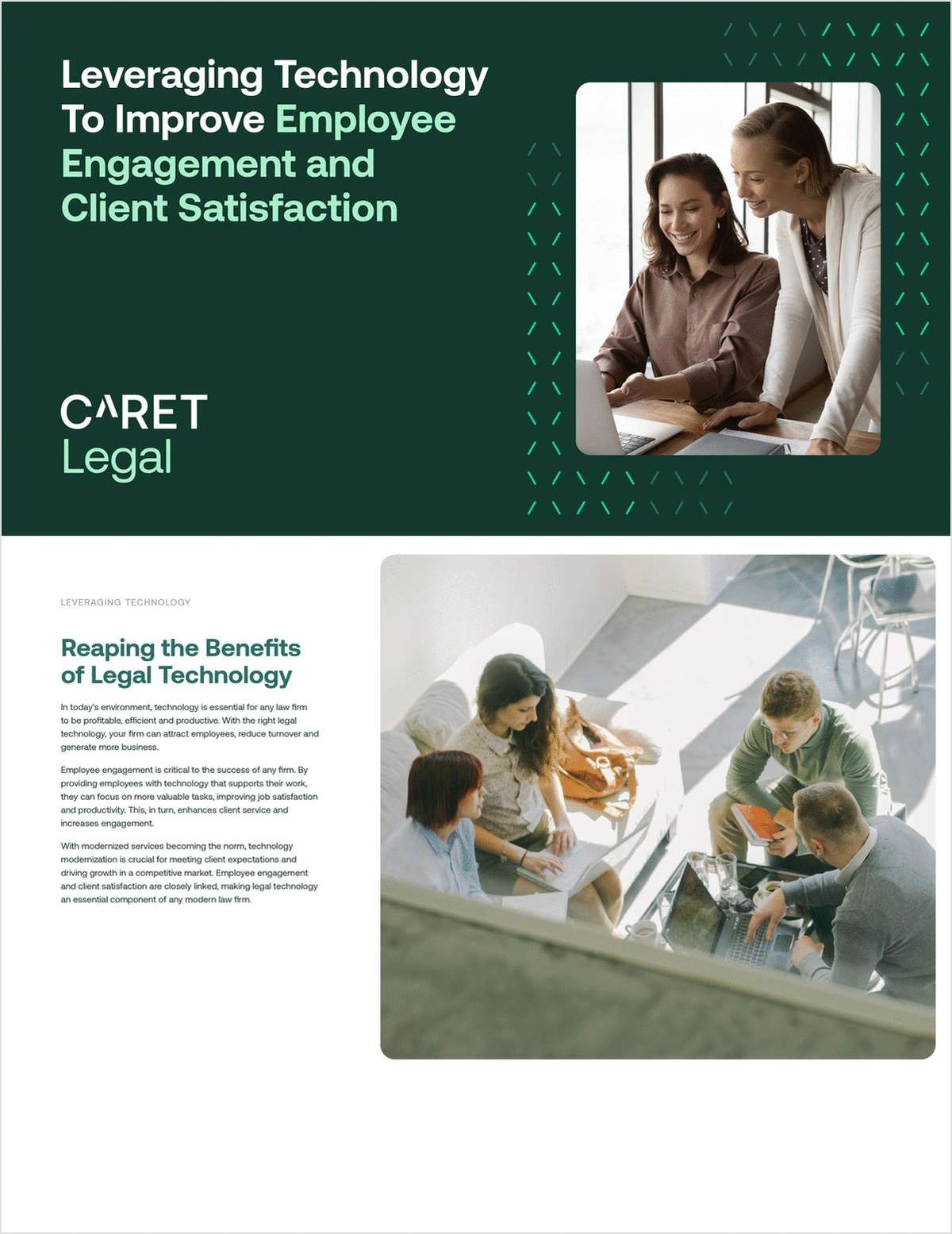When It Comes to Sexual Abuse, Victims' Lawyers Diverge on How to Sue
Lawyers suing schools like Ohio State University and the University of Southern California over widespread sexual abuse disagree on whether to file class actions or individual suits on behalf of victims.
May 28, 2019 at 05:30 AM
9 minute read
Lawsuits brought on behalf of victims of widespread sexual abuse on college campuses have flooded the courts seeking to hold various universities across the country accountable, with some reaching settlements in the hundreds of millions of dollars.
But plaintiffs attorneys don't agree on exactly how to get there.
Should victims of sexual abuse file their own suits? Or bring a class action? It's not just a procedural option. When it comes to pursing justice for sexual abuse victims, plaintiffs attorneys have strong opinions on both sides.
“I've never filed class actions in sexual abuse cases,” said John Manly, of Manly Stewart & Finaldi in Irvine, California. He engineered a $500 million settlement with Michigan State University and has several lawsuits against the University of Southern California, both involving sexual abuse scandals. “If you represent survivors, and you understand the law, and care about survivors, you don't file class cases like this. The only ones who benefit are the class lawyers and the institutions.”
Not so, say class action lawyers.
“Through a class action, the many men we represent directly can stand up for the hundreds of others in a representative capacity,” Rex A. Sharp, an attorney who has filed a class action against Ohio State University on behalf of hundreds of victims of former sports doctor Richard Strauss, wrote in an email. “In addition, a class action allows the survivors to speak as a group, even for those who wish to remain in the background.”
The debate in the plaintiffs' bar swirls as several universities, amid the growing #MeToo movement, have come under fire for rampant sexual abuse involving hundreds, sometimes thousands, of students and athletes. Many involve a former staff doctor whose abuse stretched over decades.
In 2014, Johns Hopkins University agreed to pay $190 million to settle claims tied to former gynecologist Nikita Levy, accused of secretly taking photographs of his patients' genitals. Then, last year, Michigan State University agreed to pay $500 million to resolve sexual abuse claims involving former sports doctor Larry Nassar, a physician for USA Gymnastics. Last year, the University of Southern California agreed to a $240 million settlement involving its former gynecologist, George Tyndall.
This month, two more universities, Ohio State University and The Rockefeller University, released reports following internal investigations about former staff doctors accused of sexual abuse over decades. OSU's report, compiled by outside counsel Perkins Coie, found that Strauss, who students sometimes called “Dr. Jelly Paws,” had sexually abused at least 177 male athletes over two decades, often conducting lengthy and detailed examinations of their genitalia purportedly to test for hernia. And, on May 23, Rockefeller's report, compiled by Debevoise & Plimpton, found that Reginald Archibald, who treated children with growth problems at the university's hospital, masturbated in front of patients and fondled hundreds of kids from the 1940s to the early 1980s.
Strauss and Archibald have since died, and victims have filed lawsuits against both institutions.
The question for lawyers representing those victims isn't whether to sue—but how to sue.
|Class Actions: 'More People Coming Forward'
Historically, lawsuits alleging sexual abuse have been brought on behalf of single plaintiffs. But, in the past few years, lawyers specializing in class actions have found opportunities to bring cases on behalf of large sets of victims entitled to compensation.
Johns Hopkins, for instance, agreed to settle a class action that compensated 9,000 victims. USC's settlement also comes in a class action, and OSU and Rockefeller face class actions tied to their sexual abuse scandals.
Supporters say class actions provide compensation to everyone, not just those willing to tell their story in court and hire a lawyer.
“You can try certain issues as a class so that women don't have to keep coming into court and re-proving the modus operandi and how long this took place, and who knew what and when from the USC side,” said Steve Berman, of Seattle's Hagens Berman Sobol Shapiro, co-lead counsel in the class action settlement with USC. “Plus, if a class is certified and you send notice out to all the people who this doctor saw, it's more likely to generate inclusion and more people coming forward than if they just rely on individual cases … because there are some women who just won't come forward.”
In the Johns Hopkins and USC settlements, lawyers have carved out various compensation amounts based on the level of injury to the victim. USC, for instance, has agreed to pay between $2,500 and $250,000 per victim, depending on what happened to her. They have recommended appointing retired Judge Irma Raker, of the Maryland Court of Appeals, the special master in the Johns Hopkins case who, in an unusual move, provided a video to class members explaining how she would administer individual claims ranging from $1,877 to $27,935.
Class actions require judicial review, as well. In the USC case, for instance, U.S. District Judge Stephen Wilson of the Central District of California refused to grant preliminary approval of the settlement, citing several Dec. 1 amendments to the Federal Rule 23 of Civil Procedure, which governs class actions. Lawyers revised the settlement this month, estimating 15,000 potential claimants.
David Higgins, of Los Angeles-based Higgins Settlement Law, the trustee in the Johns Hopkins settlement, said class actions tend to have fewer costs because distributions come out of one case, rather than several. But class actions also reach people who might not have a claim strong enough to pursue in court.
“That group of people gets a minimum payment, maybe $5,000 each,” he said. “And those claimants would never make it through the front door to a lawyer doing individual cases.”
Class actions also provide more anonymity, supporters say. Higgins said he sent funded checkbooks to class members in the Johns Hopkins settlement, rather than a check, which would have identified why they were getting the money.
In the USC settlement, the special master would decide how much each class member would get by evaluating claim forms or, in the most extreme cases, bringing in a “team of experts,” including a forensic psychologist, to hear a victim's story, should she want to tell it.
Sharp, of Sharp Law in Prairie Village, Kansas, said a class action was better for victims in the OSU case who are men unlikely to come forward on their own.
“Sexual abuse is one of the least reported crimes and civil wrongs, and even worse among men than women,” he wrote in his email. “We knew that many men would not come forward. The many men that we represent have told us that they know many others who have not.”
|Individual Cases: 'Strongest Legal Weapon'
But lawyers who have specialized in sexual abuse cases for years insist that class actions aren't appropriate. There is little commonality that would provide class certification because the alleged injuries, and thus damages, differ as to each individual, as does the liability against the institution and individual defendants who knew about the abuse.
“It really does a disservice to the abuse victims who are not numbers, but individuals, who have suffered some of the most horrific things a child could suffer,” said Michael Pfau, a partner at Seattle's Pfau Cochran Vertetis Amala, who represents 200 sexual abuse victims planning to sue Rockefeller. “It's important to take back the control they lost and be treated like individuals, not like numbers. And, in a class action, you are treated like a number.”
Lawyers also oppose class actions because they provide far fewer dollars to sexual abuse victims than do individual cases. In the MSU case, for instance, individual payouts averaged $1.3 million—a fact noted by Manly, who plans to recommend that his clients who have sexual abuse claims against USC opt out of its class action settlement. The maximum payout to an individual class member in the USC settlement would be $250,000, but most would get far less.
“$250,000 doesn't pay for the therapy you'll need over your lifetime,” he said.
Sexual abuse victims also are not like class members looking for reimbursement over a mislabeled product. There are sensitivities involved.
“Sometimes, the institutional betrayal piece is even more damaging than the abuse itself because of a loss of trust of people who are supposed to look out for you,” said Adele Kimmel, senior attorney at Public Justice, who filed a case against OSU on behalf of 39 plaintiffs. “They find it harder to trust people in the future. Lawyers who represent sexual assault survivors really have to be extremely sensitive to do the best they can in the process of representing, so they're not re-traumatizing them.”
And many states are passing new laws that would eviscerate a major defense for universities by extending or changing the statute of limitations on sexual abuse claims. OSU, for instance, has brought motions to dismiss both Public Justice's case and a separate class action as time-barred, but this month's report prompted Ohio Gov. Mike DeWine to call for a legislative overhaul of the state's statutes of limitation.
Pfau said he plans to file individual sexual abuse lawsuits against Rockefeller in August, when a new statute of limitations law in New York becomes effective.
What's most important, Pfau said, is that sexual abuses victims want to be heard. And class actions, he said, take away that opportunity.
“The abuse victim has the right to a jury trial,” he said. “When they become unwittingly part of a class, they literally lose their strongest legal weapon and right.”
Not all lawyers squabble over the procedural differences. Sharp, in the OSU class action, said there is room for both kinds of cases. U.S. District Judge Michael Watson of the Southern District of Ohio has consolidated his class action with Public Justice's case, along with another lawsuit brought this month on behalf of five plaintiffs, for the sole purpose of focusing on mediation talks on June 15.
“All roads lead to Rome,” said Ilann Maazel, of New York's Emery Celli Brinckerhoff & Abady, another lawyer in the Public Justice case. “The goal is to hold the university accountable and have multiple cases seeking this very important goal.”
This content has been archived. It is available through our partners, LexisNexis® and Bloomberg Law.
To view this content, please continue to their sites.
Not a Lexis Subscriber?
Subscribe Now
Not a Bloomberg Law Subscriber?
Subscribe Now
NOT FOR REPRINT
© 2024 ALM Global, LLC, All Rights Reserved. Request academic re-use from www.copyright.com. All other uses, submit a request to [email protected]. For more information visit Asset & Logo Licensing.
You Might Like
View All
'New Circumstances': Winston & Strawn Seek Expedited Relief in NASCAR Antitrust Lawsuit
3 minute read
Consumer Cleared to Proceed With Claims Against CVS 'Non-Drowsy' Medication, Judge Says
4 minute read
'Water Cooler Discussions': US Judge Questions DOJ Request in Google Search Case
3 minute read
Divided State Court Reinstates Dispute Over Replacement Vehicles Fees
5 minute readTrending Stories
Who Got The Work
Michael G. Bongiorno, Andrew Scott Dulberg and Elizabeth E. Driscoll from Wilmer Cutler Pickering Hale and Dorr have stepped in to represent Symbotic Inc., an A.I.-enabled technology platform that focuses on increasing supply chain efficiency, and other defendants in a pending shareholder derivative lawsuit. The case, filed Oct. 2 in Massachusetts District Court by the Brown Law Firm on behalf of Stephen Austen, accuses certain officers and directors of misleading investors in regard to Symbotic's potential for margin growth by failing to disclose that the company was not equipped to timely deploy its systems or manage expenses through project delays. The case, assigned to U.S. District Judge Nathaniel M. Gorton, is 1:24-cv-12522, Austen v. Cohen et al.
Who Got The Work
Edmund Polubinski and Marie Killmond of Davis Polk & Wardwell have entered appearances for data platform software development company MongoDB and other defendants in a pending shareholder derivative lawsuit. The action, filed Oct. 7 in New York Southern District Court by the Brown Law Firm, accuses the company's directors and/or officers of falsely expressing confidence in the company’s restructuring of its sales incentive plan and downplaying the severity of decreases in its upfront commitments. The case is 1:24-cv-07594, Roy v. Ittycheria et al.
Who Got The Work
Amy O. Bruchs and Kurt F. Ellison of Michael Best & Friedrich have entered appearances for Epic Systems Corp. in a pending employment discrimination lawsuit. The suit was filed Sept. 7 in Wisconsin Western District Court by Levine Eisberner LLC and Siri & Glimstad on behalf of a project manager who claims that he was wrongfully terminated after applying for a religious exemption to the defendant's COVID-19 vaccine mandate. The case, assigned to U.S. Magistrate Judge Anita Marie Boor, is 3:24-cv-00630, Secker, Nathan v. Epic Systems Corporation.
Who Got The Work
David X. Sullivan, Thomas J. Finn and Gregory A. Hall from McCarter & English have entered appearances for Sunrun Installation Services in a pending civil rights lawsuit. The complaint was filed Sept. 4 in Connecticut District Court by attorney Robert M. Berke on behalf of former employee George Edward Steins, who was arrested and charged with employing an unregistered home improvement salesperson. The complaint alleges that had Sunrun informed the Connecticut Department of Consumer Protection that the plaintiff's employment had ended in 2017 and that he no longer held Sunrun's home improvement contractor license, he would not have been hit with charges, which were dismissed in May 2024. The case, assigned to U.S. District Judge Jeffrey A. Meyer, is 3:24-cv-01423, Steins v. Sunrun, Inc. et al.
Who Got The Work
Greenberg Traurig shareholder Joshua L. Raskin has entered an appearance for boohoo.com UK Ltd. in a pending patent infringement lawsuit. The suit, filed Sept. 3 in Texas Eastern District Court by Rozier Hardt McDonough on behalf of Alto Dynamics, asserts five patents related to an online shopping platform. The case, assigned to U.S. District Judge Rodney Gilstrap, is 2:24-cv-00719, Alto Dynamics, LLC v. boohoo.com UK Limited.
Featured Firms
Law Offices of Gary Martin Hays & Associates, P.C.
(470) 294-1674
Law Offices of Mark E. Salomone
(857) 444-6468
Smith & Hassler
(713) 739-1250









